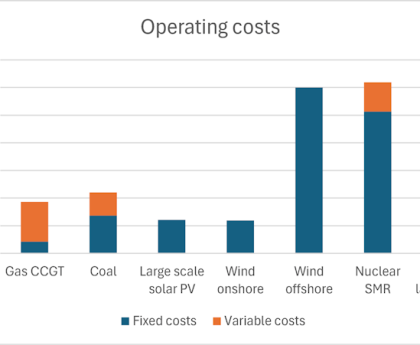Majority of wind and solar energy companies are not spending enough to protect from fire incidents, despite millions in costs per incident, significant downtime, and risk of reputational damage, according to Firetrace International.
Approximately 75-85 percent of operational wind turbines and 70-80 percent of new wind turbines globally do not have fire suppression technology installed. This is despite the fact that the average turbine has a 1 in 100 chance of catching fire over an expected 20-year life, based on data from Wind Power Engineering.
Replacing one wind turbine can cost up to $9 million, factoring in revenue lost from downtime. When it comes to solar, an estimated 95 percent of all solar inverters do not have fire suppression technology installed, according to Firetrace International, a provider of fire suppression solutions supporting safe operations in renewable energy.
Figures show that fire risk increases in older assets, up to a 30 percent increase in wind assets aged between 5-10 years and up to a 15 percent increase in solar inverters after 3-5 years. With approximately a fifth of Europe’s onshore turbines at least 15 years in age, and 14 percent of US wind capacity currently generated by turbines more than 10 years old, retrofitting aging assets with fire suppression systems is crucial.
There has been improvement in the outlook for wind turbine protection. In the US especially, huge levels of public investment is coming into the sector as a result of the Inflation Reduction Act to support US offshore capacity targets, and developers can take steps to manage the fire risk proactively. Many owner operators are installing this technology and Firetrace has seen 26 percent increase in installations over the last 5 years.
American President Joe Biden announced a $6 billion investment in November 2023 aimed at improving community resilience to climate change and strengthening the aging grid. Equipping renewable assets with fire suppression systems must be part of this grid hardening effort, especially as utilities face pressure from net-zero targets, portfolio scale, and potential fines from fire-related incidents.
However, despite these actions, only 20-30 percent of new wind turbines are installed with adequate fire protection and there is no change for solar inverters, with 95 percent of new assets still at risk.
Most renewable energy assets have fire detection systems installed but these merely identify the presence of a fire without actively addressing it. In contrast, fire suppression systems are essential for quickly and effectively extinguishing the flames, minimizing the risk of extensive damage and potential spread. By swiftly quelling fires, suppression systems help to protect not only the asset itself but also nearby ecosystems, communities, and infrastructure.
Owning approximately 72 percent of wind and solar assets globally and being committed to 2030 Net Zero goals, it is especially important for utilities to take the lead by installing fire suppression systems in both new and older assets.
Joseph DeBellis, Senior Global Sales Manager at Firetrace, said: “The increasing fire risks in aging renewable assets highlight the urgent need for utilities and other owner operators to take proactive measures. Retrofitting fire suppression systems is not only a cost-effective solution but also essential for protecting assets, minimizing downtime, securing clean energy supply, and ensuring the safety of surrounding communities.”
This post was originally published on 3rd party site mentioned in the title of this site





